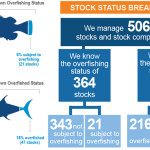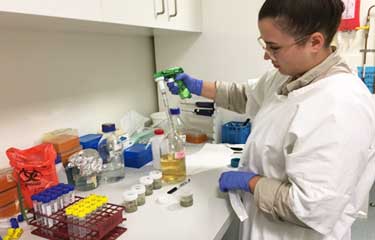The prevalence of vibrio in tropical rock oysters is increasing due to warming waters caused by climate change, according to research conducted by researchers from Australia’s Charles Darwin University.
Anna Padovan and Karen Gibb, both from Charles Darwin University’s Environment and Livelihoods Research Institute, presented their findings this week at the 2023 World Aquaculture Conference in Darwin, Australia.
They found vibrio bacteria is moving into new areas on warmer currents, and has the potential to taint tropical rock oysters in Northern Australia. Vibrio can cause a range of human illnesses when ingested, including gastroenteritis and, rarely, death.
“We urgently need to learn more about this bacteria, its growth rates, and how pathogenic strains can suddenly dominate the bacterial population in both seawater and shellfish to adversely affect food safety and human health,” Padovan said. “We have detected over 40 vibrio species in our warm northern waters, but very few of those species have the potential to threaten animal or human health. Even within those few species that are potential pathogens, there are many different strains. It’s a confusing story to tell.”
Over the past decade, Gibb and Padovan have been researching vibrio prevalence in Northern Australia and they said pathogenic strains of vibrio currently are found in less than 3 percent of samples they’ve taken. However, Padovan said because temperature, salinity, and local nutrient levels influence vibrio abundance, and because global warming is affecting those factors, vibrio is likely to become more common in Australia and globally in coming years and decades.
“We’re only beginning the journey to understand pathogen genes, but this will be key to understanding when and how vibrios cause illness in people,” Padovan said. “Once we have a greater understanding of this, we will then be able to make even more significant contributions to quality assurance for the tropical rock oyster industry in Northern Australia.”
Vibrio bacteria occur naturally in coastal areas and estuaries in waters at or above 15 degrees Celsius, or 59 degrees Fahrenheit.
“Even for those known pathogenic vibrio species, not all strains of that species are a problem. But we urgently need to do more work on those pathogenic strains to find out what genes enable them to cause illness,” Padovan said. “We already know of some genes, but they are not always present in human clinical samples, so clearly there are more genes to find. We can use these genes to develop mobile testing capability to provide early warning that pathogenic strains are present. This would provide greater reassurance to oyster growers in particular.”
Padovan and Gibb presented data the growth rates of potential pathogenic vibrio in blacklip rock oysters post-harvest at different temperatures, and a study completed by graduate student Zarah Tinning focused on the impact of vibrio bacteria on tropical rock oyster larvae.
Photo courtesy of Charles Darwin University







